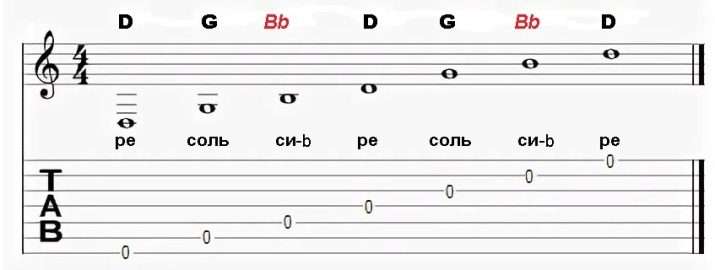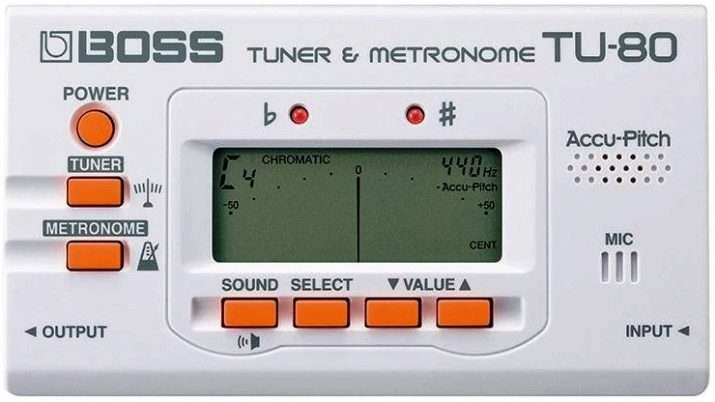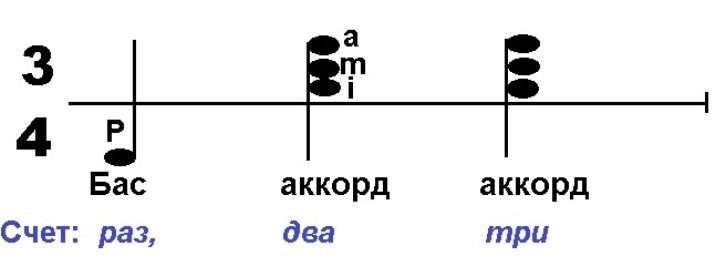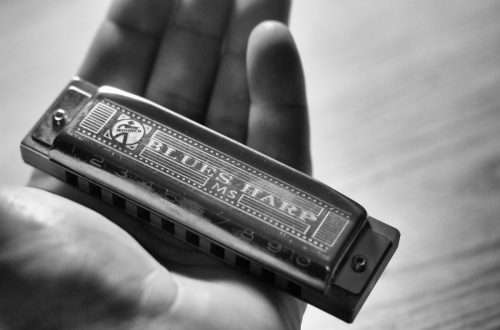
How to play the seven-string guitar?
The seven-string guitar was once very widespread in our country, and its popularity surpassed the enthusiasm for the six-string classical instrument. Nowadays, everything has changed exactly the opposite: the seven-string is not always seen even in music stores. However, there are always those who want to learn how to play the guitar with 7 strings, which is sometimes called “Russian” or “Gypsy”. To help them – the article below, which tells about the setup of this instrument and the basics of playing it.
Setting
In fact, the Russian and Gypsy seven-strings have the same construction, differing only in their settings . The Russian scale is G major (G-scale), and the Gypsy scale is G-minor (Gm-scale). This should be considered in more detail.
The string chord of the Russian tuning looks like this, if you start from the thickest – the 7th – string: DGBDGBD.
The same on the stave and tablature:

The actual sound of any guitar string is an octave lower than indicated on the musical staff . For example, the seventh string on the staff is indicated by the note “D” of the small octave, but it actually sounds like the note “D” of the large octave. A bit, of course, confusing, but the decision on such a recording was made in order to facilitate the reading of sheet music by the musician.
In the event that the recording of guitar melodies in the treble clef was carried out in real sound, most of the parts would be in a very low register of the staff with many additional lines.
But you shouldn’t think too much about how the strings sound. All musical literature for the guitar is transposed from the original one octave higher, so we can conditionally assume that this instrument sounds exactly as it is written in the notes. And in those cases when you need to play a melody from the score of another musical instrument, the sound of which matches the notation of the specified pitch, you will have to independently correct the sounds an octave higher.
The open strings of the gypsy guitar are tuned a little differently: DG – Bb -DG- Bb – D. That is, here the second and fifth strings are lowered by a semitone: in the Russian system they were “si”, in the gypsy they became “si-flat”. The key of the G chord changed from major to minor.
On the stave and tablature, the gypsy system of the seven-string looks like this:

Lessons for learning or playing the seven-string guitar should always begin with a mandatory check and adjustment of the instrument’s string tuning to standard sounds. The setting can be done in different ways:
- by ear, which is impossible for beginners to learn;
- by a tuning fork tuned to the sound “la” of the first octave;
- for another tuned musical instrument (piano, harmonica, accordion, mandolin, and so on);
- by electronic tuner;
- using a computer program.
For those who decide to learn how to play the seven-string on their own, the last two are the surest ways to tune it: an electronic tuner from a musical instrument store or a tuner program borrowed from the Internet for free.
The principles of operation of these digital devices are almost the same, and their interface will be clear to everyone. They pick up the sound of the string, determine its pitch and suggest, by means of an indicator, to tighten or loosen the string to the desired vibration frequency. And the symbols for designating sounds are the same as those indicated above: DGBDGBD (or somewhat differently).

Tuning by ear or other instruments can be made after gaining some experience playing the instrument. At the same time, one should not forget that the guitar sounds an octave lower. Therefore, when tuning, for example, the first string on the piano, you should press the “re” key of the first octave, twisting the corresponding peg on the guitar so that the first string sounds in unison (equally) with the sound of this key.
Game Basics
Learning to play the 7-string guitar has its own specifics, different from other types of guitars. Somewhere it is more difficult, which is explained by a large number of strings than a classical or acoustic six-string guitar, but somewhere, on the contrary, it is easier, given its open system. The barre technique on a seven-string is also harder to perform (there are too many strings) when compared with a classical instrument. A lot of inconvenience is created by the wider fretboard of the Russian guitar.
It is important to remember that the Russian guitar should only be played with metal strings. Nylon ones sound bad, quiet (especially the first two), the sustain is not what a seven-string needs, and the romanticism disappears.
For guitar players starting from scratch, the following order of learning the basics of playing the instrument can be recommended.
- To master the correct fit with the tool and the optimal position of the hands. This can be done with the help of educational literature – relevant schools and tutorials. They also learn about what fingering means and how the fingers of both hands and strings are indicated.
- On open strings, learn to act with the fingers of your right hand. That is, to master the techniques of plucked (unsupported) and sliding (with support on the adjacent string) strikes, several simple types of brute force, separate thumb play, variable play on one string with adjacent fingers. At the same time, study musical notation, otherwise the teaching will be difficult. Here are the sheet music and tabs for some of these exercises:

- Learn a few chromatic exercises using the fingers of your left hand.
- Start mastering easy scales within two octaves in one position. Given the open tuning of the guitar, this can be done in one position. The first such exercise will be the scale in D major:

- Play simple strumming (arpeggios) with a change of simple chords in which there are open strings . For example, ascending picking, descending and mixed with the bass and the three thinnest strings.
- Learn a few chords using a plucked waltz as an example. For example, C, Dm and Am chords. The waltz fight is played like this: the bass is played with the thumb, and two chords one after the other are played by simultaneous plucking of the corresponding strings by the index, middle and ring fingers of the right hand.

On this, we can consider the “guitarist course from scratch” completed. Further, all the basic techniques passed will need to be improved and developed in combination with complex guitar playing techniques.
Recommendations
Here are some tips for guitar beginners:
- learning to play the instrument, immediately master the musical literacy;
- do not ignore the fit with the guitar recommended by professionals: it has been worked out by many generations of performers to the ideal, is convenient and practical, and will relieve fatigue;
- for children, it is better to use fourth or fifth models of seven-strings, which have smaller instrument sizes;
- lessons with a teacher should be held at least 1-2 times a week, and self-study – daily.





